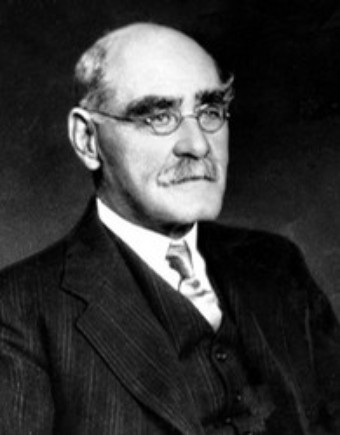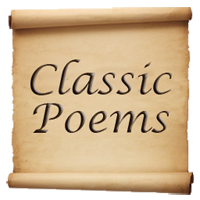In the poem How the Camel got his Hump, Rudyard Kipling compares man with a camel. Or precisely, he compares man’s posture with that of a camel’s. The poetic voice expresses here the notion of laziness, and what it eventually does to a man. The camel’s hump is absolutely not a pleasant sight to see is what the poet infers. And the sight of such a hump is visible to the spectators at a zoo. The poet here associates the hump with inaction. A camel stuck in a cage does not have anything fruitful to do apart from engaging in leisurely actions. The poet then goes on to say that the sight which is uglier is that of us having to carry a hump, for we have “too little to do”. Here, like a camel bound in zoo having nothing productive to do, we too like the animal might develop a hump when we engage ourselves in simply doing nothing. Hump is thus a symbol for lethargy.
How the Camel Got his Hump Summary
The poet brings into his perspective men and women of all ages, starting from infanthood to old age. All people, irrespective of their age will eventually develop a hump when we participate in absolute inertness. The poet is decided in his remarks and his observations are general encompassing all individual. The repetitive sounds of “to-oo-oo” and “do-oo-oo” have a dragging sense whereas if the poet tries to shake up his readers into necessary work and activity. We must run our daily errands. Again, such dragging repetition may be employed to show an effect of tiredness caused by doing nothing.
By using “we” the poet includes the readers into his perspective and it seems the poet himself is guilty of the same cause of which the poet is condemning his readers. The poet moves on to talk about the color of the hump which is “black and blue”. The poet here has employed color symbolism, where black is associated with shame and blue with pain. It will be a shame if we stop doing everything and our hump will be of the color black. Again, to make us work, we might be flogged like animals and our hump will take up the color blue. We remember the phrase “to beat black and blue”.
The poet in the third stanza talks about men, getting up from bed with their sleepy heads and ill-kempt hair. Kipling employs an invented word “snarly-yarly” meaning cross and inclined to snap to demonstrate the nature of sleepy voice. We are as if condemned to lethargy and cannot quite get rid of feeling sleepy. We are even slothful in getting ourselves ready for the day. We frown and retreat from thoughts of taking a bath or tying up shoe-laces or even we recoil at the thought of engaging ourselves in playing with toys. Such is the degree of our sloth-like nature. The poet here subtly comments that one who is work-shy in his personal level; he is unworthy to perform in a professional or public sphere. Kipling here humorously satirizes the inherent human condition and tendency. Rest has as if grown into our body to become flesh and blood.
Kipling in the fourth stanza talks about corners- corners with the sense of hiding-places. We have enough corners for our faces to be hidden, but our world is round. A sphere is without corners and though there are places to hide, we will eventually get found out. The poet is himself guilty of being inactive and seeks for a hiding place only after he has ensured that his readers have ample hiding places. The ugly hump that we will eventually have needs to be hidden for it is not a pretty sight. With the hump, we have to hide from the world. However, on a different note, corners can suggest seclusion which we often seek as places of rest. The poet is ironic in his tone and contemplates that the heaviness of having a hump will fatigue us so much that we will eventually require a corner to rest and eventually sleep. The phrase “black and blue” repeats like a refrain reminding us of the consequences of such an endeavor.
The fifth stanza provides a plausible remedy from such a labour of doing nothing. The poet here invokes action as opposed to inaction. The poet is commanding the readers to engage in laborious work which seems to be the only way to get rid of such embarrassment of having an ugly hump from our backs. Interestingly, the process is reversible and the poet hammers-home to his readers that every action follows up to its connected consequences. We should not sit still or engage in excess reading sitting comfortable by the fire, enjoying the coziness altogether. We are urged by Kipling to engage ourselves in outdoor activities, primarily in the act of farming. Unless we start to perspire from the work-load, no actual work seems to have been done.
Working will eventually lead to the bestowing of benevolent blessings upon us by Mother Nature and the Djinn of the garden. The blessing will come in the action of magical removal of the ugly hump and we henceforth will not have to fear being “black and blue”. The horrible hump will be gone. But if we relapse into our previous inaction, the hump might again pop up.
In the last stanza, the poet summarizes his whole focal point, that work is the only form of redemption. We must realize that work is essential and succumbing to sins of lethargy will eventually lead to the curse of having a hump. The word which is important is “enough”. The poet as if asks us not to be satisfied with minimal work and our ability to perform should be more than enough. We must sweat and labour must be our ultimate predicament. Without work, we will remain ugly. Work is the hallmark of our identity. Hope you enjoyed reaching the summary of How the Camel got his Hump.
Some online learning platforms provide certifications, while others are designed to simply grow your skills in your personal and professional life. Including Masterclass and Coursera, here are our recommendations for the best online learning platforms you can sign up for today.
The 7 Best Online Learning Platforms of 2022
- Best Overall: Coursera
- Best for Niche Topics: Udemy
- Best for Creative Fields: Skillshare
- Best for Celebrity Lessons: MasterClass
- Best for STEM: EdX
- Best for Career Building: Udacity
- Best for Data Learning: Pluralsight












